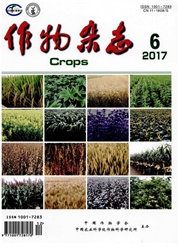

 中文摘要:
中文摘要:
基于不同熟性棉花品种的异地分期播种和施氮量试验,分析棉籽油分含量与棉籽生物量间的异速关系,综合品种特性、主要气象条件,以棉籽生物量为驱动,建立基于异速生长关系的棉籽油分含量模拟模型。利用不同生态点品种、播期和施氮量的田间试验资料的检验结果表明:安阳、淮安和徐州试点模拟值与实测值的RMSE分别为2.2%、2.9%和2.4%。说明依据棉籽油分含量与生物量间的异速生长关系预测棉籽油分含量切实可行,模型预测性好,广适性较强。
 英文摘要:
英文摘要:
The object of this study was to simulate the formation of cotton seed oil by allometry growth relationship between the change of cottonseed oil content and the biomass accumulation. A set of field experiments were conducted in the lower reaches of Yangtze River Valley ( Nanjing, Huaian) and the Yellow River Valley ( Xuzhou, Anyang) in 2005, where Kemian 1 and NuCOTN 33 B were selected, two sowing dates and three N fertilizer application rates were conducted. According to the data collected in Nanjing, a simulation model of cotton seed oil content was developed based on allometry method, and the response of cotton seed oil content to meteorological factors were quantified. The parameters in the model were calibrated using the field data obtained in Nanjing. The model was tested using an independent field data obtained in Huaian, Xuzhou and Anyang. The results showed that the model was sufficiently robust to accurately predict cottonseed oil content with the RMSEs of 2.2% ,2.9% ,and 2.4% respectively. It proved the feasibility that using allometry growth equation to accurately simulate cotton seed oil content.
 同期刊论文项目
同期刊论文项目
 同项目期刊论文
同项目期刊论文
 期刊信息
期刊信息
